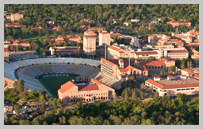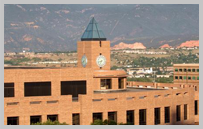October 2025 State Authorization Updates & Information
Workforce program funding again? Erika, how is this a state authorization thing? I know, I know—but hear me out.
The Department of Education’s recent proposal to make “workforce readiness” a funding priority might sound like a new direction, but for state authorization professionals, it’s really a bit of déjà vu. Once again, the federal government is trying to connect educational opportunity to employment outcomes—and once again, success depends on knowing who offers what, where, and to whom. Does that sound familiar?
The proposal would make workforce alignment a priority for discretionary grants, signaling a broader effort to tie program eligibility, institutional quality, and public accountability to measurable employment and earnings outcomes. If that sounds like Gainful Employment with a new haircut, it kind of is—but now the focus extends beyond Title IV programs to noncredit and short-term credentials, apprenticeships, and industry-aligned training.
Why State Authorization Professionals Should Pay Attention
Those of us who work in the state authorization landscape already operate at the intersection of education, geography, and regulation. And I bet many of you have realized that as federal and state systems start mapping programs to workforce outcomes instead of credit hours, the work we’ve done to comply with SARA and state regulations can provide the blueprint for future compliance infrastructure across our institutions.
Key parallels:
- Location tracking and data integrity – Workforce Pell and financial value reporting will hinge on knowing where students learn and work. Those are the same systems we’ve built for SARA, licensure disclosures, and OOSLP tracking.
- Crosswalks and classification – We’ve long understood the CIP-to-SOC and program-to-license mappings, and these same tools will likely be essential as ED and the Department of Labor define “high-value” credentials and tie funding to occupational outcomes.
- Transparency and disclosure – Workforce readiness relies on clear communication of cost, outcome, and employability data—just like professional licensure and other required disclosures under 34 CFR 668.43.
- Interstate coordination – Remember, our students are mobile, and they expect their education and credentials to be mobile too. The coming shift will demand coordination across federal, state, and accreditor lines—and authorization professionals have years of experience navigating these overlapping authorities.
Where We Can Add Value on Campus
This is a moment when state authorization offices can shift from being compliance watchdogs to becoming genuine strategic partners. We’re in a unique position to translate dense regulatory language for academic leaders and workforce development teams who are just starting to navigate this particular niche of federal compliance expectations. We can also help connect the dots with Institutional Research by sharing what we already know about tracking student location and what is required of us under current regulations in terms of licensure programs, and assist IR (and others on our campuses) in linking this to employment and outcomes. That same experience makes us natural allies for our campuses as they explore Workforce Pell eligibility or new grant opportunities. And when questions come up about how modular or stackable programs fit within Title IV or accreditation definitions, we can help governance committees and accreditors think through those boundaries. Maybe most importantly, we can model proactive communication strategies that keep students and employers at the center—something we already do every day through licensure disclosures and other associated state authorization consumer information..
A Subtle but Important Cultural Shift
The workforce readiness narrative reframes quality not as academic rigor alone, but as economic mobility. That may unsettle some parts of higher education—but it also gives us a way to articulate how state authorization processes and policies were designed to safeguard both students and the public.
If state authorization work has sometimes been viewed as a bureaucratic necessity, this is our chance to show it as a strategic compliance function that anticipates, not just reacts to, federal priorities.
Closing Thought
As the Department of Education invites public comment on this proposal through October 27, now is the time for our community to step forward. The same skills we use to navigate multistate licensure maps and complex SARA frameworks can help our institutions build the data, partnerships, and policies that make “workforce readiness” more than a slogan.
And looking ahead, as federal definitions of education evolve to include nondegree and short-term training programs, states may have to reinterpret their authorization thresholds—especially for noncredit workforce credentials offered to out-of-state students through distance or correspondence education. This will be particularly challenging under SARA, where “postsecondary education” is still anchored in credit-bearing coursework. If the Department or Congress expands Workforce Pell to cover these noncredit programs, both state agencies and NC-SARA will need to revisit how membership, eligibility, and reporting are defined.
In other words, change is coming—but it’s familiar territory for state authorization professionals. We’ve been preparing for this moment all along.






Add new comment